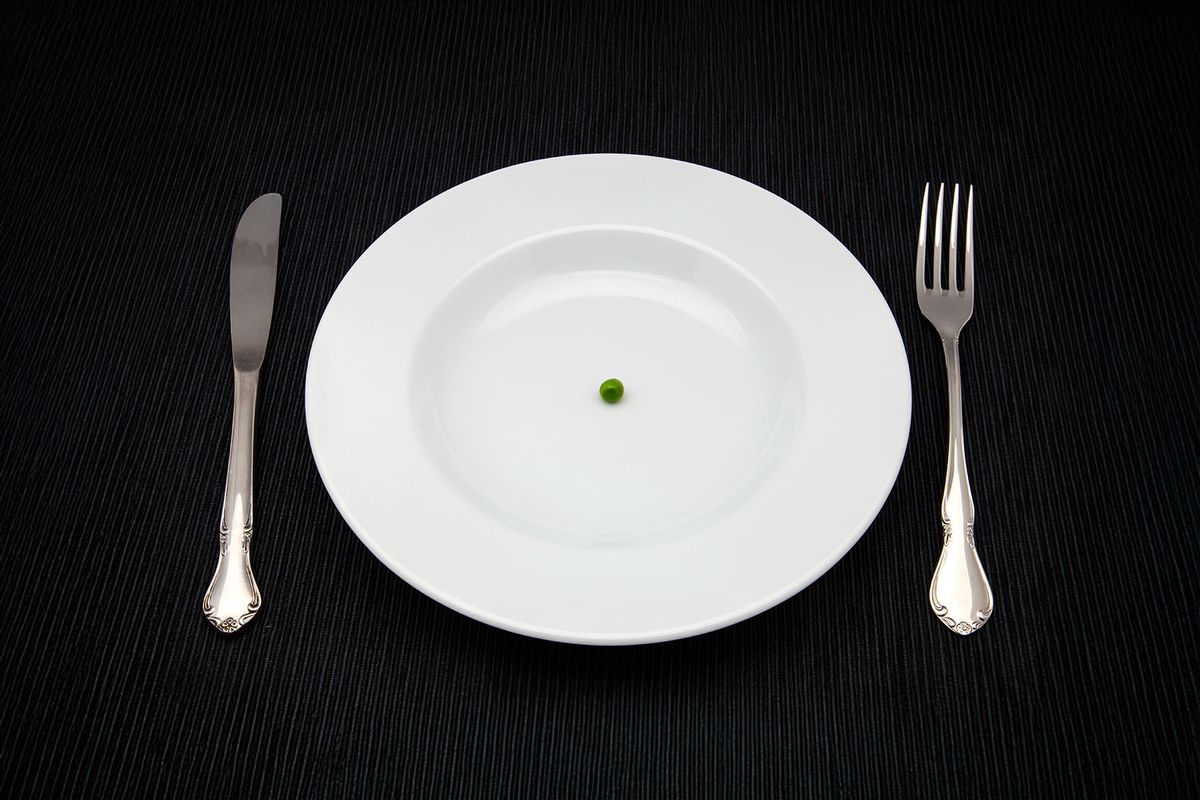Ultraprocessed food addiction, eating disorder ‘almost killed’ Chicago man

Chicago native Jeffrey Odwazny says he has been addicted to ultraprocessed food since he was a child.
“I was driven to eat and eat and eat, and while I would overeat healthy food, what really got me were the candies, the cakes, the pies, the ice cream,” said the 54-year-old former warehouse supervisor.
“I really gravitated towards the sugary ultraprocessed foods — it was like a physical drive, I had to have it,” he said. “My parents would find hefty bags full of candy wrappers hidden in my closet. I would steal things from stores as a kid and later as an adult.”
Some 12 per cent of the nearly 73 million children and adolescents in the United States today struggle with a similar food addiction, according to research. To be diagnosed, children must meet Yale Food Addiction Scale criteria as stringent as any for alcohol use disorder or other addictions.
“Kids are losing control and eating to the point where they feel physically ill,” said Ashley Gearhardt, a professor of psychology at the University of Michigan in Ann Arbor who conducted the research and developed the Yale addiction scale.
“They have intense cravings and may be sneaking, stealing or hiding ultraprocessed foods,” Gearhardt said. “They may stop going out with friends or doing other activities they used to enjoy in order to stay at home and eat, or they feel too sluggish from overeating to participate in other activities.”
Her research also shows about 14 per cent of adults are clinically addicted to food, predominantly ultraprocessed foods with higher levels of sugar, salt, fat and additives.
For comparison, 10.5 per cent of Americans age 12 or older were diagnosed with alcohol use disorder in 2022, according to the National Survey on Drug Use and Health.
While many people addicted to food will say that their symptoms began to worsen significantly in adolescence, some recall a childhood focused on ultraprocessed food.
“By age two or three, children are likely eating more ultraprocessed foods in any given day than a fruit or vegetable, especially if they’re poor and don’t have enough money in their family to have enough quality food to eat,” Gearhardt said. “Ultraprocessed foods are cheap and literally everywhere, so this is also a social justice issue.”
An addiction to ultraprocessed foods can highjack a young brain’s reward circuitry, putting the primitive “reptilian brain,” or amygdala, in charge — thus bypassing the prefrontal cortex where rational decision-making occurs, said Los Angeles registered dietitian nutritionist David Wiss, who specializes in treating food addiction.
“Ultraprocessed food addiction also teaches the young brain what to expect from food, like how much sugar reward one should get from eating a snack,” said Wiss, which makes healthier options less appealing.
“It’s almost virtually impossible for a child, or even a 14- or 15-year-old, to be able to override all of this biology for very long,” he added.
The Institute of Food Technologists, an association of food professionals and technologists, does not agree with the research on ultraprocessed food addiction.
“While there is growing concern that some foods may be addictive for certain sub-populations including children, there is currently no scientific consensus to support that concern,” said IFT’s chief science and technology officer, Bryan Hitchcock, in an email.
Food addiction is also not recognized by the World Health Organization’s International Classification of Diseases and is a subject of debate in the scientific community, according to the International Food and Beverage Alliance, an industry association.
“Some believe markers of food addiction indicate eating disorders rather than substance use disorders,” said IFBA’s secretary-general, Rocco Renaldi, in an email.
‘This disorder has almost killed me’
Traumatic experiences in early childhood helped to trigger and nurture his addiction to ultraprocessed foods, Odwazny said.
“One of my earliest memories is being in a high chair with ashtrays going over my head and plates smashing into the walls,” Odwazny said. “Instead of saying, ‘I’m sorry’ or showing love, my family would feed me.”
At first, he said his parents thought his overeating was funny and began calling him names such as “the creeper” when he would escape from his crib in the night to raid the refrigerator. As he grew, however, Odwazny’s parents began to put locks on the refrigerator and kitchen cabinets. He was often ashamed of his eating.
“There was a lot of name-calling. I was nicknamed everything from butterball to fat ass and worse,” he said. “You know the dads of some kids would call, ‘Hey, buddy or pal,’ but my dad used to call me ‘the Orca.’”
Despite his preoccupation with food, Odwazny was careful not to overeat in front of strangers as he grew up. Instead, when faced at a party with trigger foods such as chocolate-covered peanut butter cups, he would leave to buy that specific food.
“I would go to one store until I bought it all out, and then I would have to travel to another store,” he said. “I would buy two or three family-size bags, and I would eat so much in one sitting that I would be in a fog. Sugary food is a drug for me.”
The disorder took over his life. Before one meal of highly processed food was over, he was thinking about where to find the next. By 2016, his food addiction was at its worst.
“I would steal food or eat things that were burnt or spoiled,” he said. “I’ve often gotten sick and had to go to the hospital. In fact, this disorder has almost killed me several times.”
The food-addicted brain
Eating higher amounts of ultraprocessed food raises the risk of obesity and the development of chronic conditions, including cancer, cardiovascular disease, obesity, type 2 diabetes and depression.
Still, many people find it hard to stop eating overly processed convenience foods such as hot dogs, French fries, crackers, frozen pizza, sausages, sodas, doughnuts, candy and ice cream.
Ultraprocessed foods often contain flavours, different textures and “additives whose function is to make the final product palatable or more appealing,” according to the Food and Agriculture Organization of the United Nations.
Such foods are designed to maximize levels of the feel-good hormone dopamine in the brain, experts say. Added fats increase calories and improve the “mouthfeel” that makes food pleasing. Texture plays a role as well.
“Foods that melt in the mouth and are smooth or creamy, or alternatively, foods with crunch, can create an immediate neurochemical reward,” Wiss said. “A lot of food science goes into this and lot of research and development by manufacturers.”
Copious amounts of salt improve flavour. Sugar is so powerful that it’s used as a replacement for pain medication for minor surgeries in babies: “For circumcisions or shots, they’ll give babies a dose of sugar because it releases opioids in the brain and dulls pain,” Gearhardt said.
In fact, animal studies suggest sugar levels in ultraprocessed foods may be as addictive to the brain as alcohol or tobacco, she said.
“These are really invasive studies, with wires in the brain,” Gearhardt said. “Sugar creates the same amount of dopamine release that mimics what you see with nicotine and ethanol — around 150 per cent to 200 per cent above baseline.
“Cocaine is much more addictive, between 1,000 per cent and 2,000 per cent above baseline,” she said. “But animals still often choose a sweet taste over cocaine.”
The makers of ultraprocessed food strive to meet this dopamine “bliss point” via secret, proprietary mixtures of sugar, fat, salt and flavour additives that experts say trigger the basest of our animal instincts — the need for survival.
“If there is a really high-value meal in front of you, something rich and fatty that has a lot of calories in it, the brain is set up to say, ‘Go ahead and eat it,’ even if you are full because our ancestors had no guarantee they would find food the next day,” said appetite specialist Alexandra DiFeliceantonio, an assistant professor at Virginia Tech in Blacksburg.
The brain is also wired to remember and crave the pleasurable flavor of a food and its lifesaving calories in a process similar to Pavlovian, or classical conditioning, said DiFeliceantonio, who is also associate director of the Center for Health Behaviors Research at Virginia Tech.
“It’s what we all learned in Psychology 101, right? Light comes on; food drops; dog salivates,” she said.
Food processing plays a role
How ultraprocessed foods are made may also contribute to addiction, experts say. Due to manufacturing methods that break down cell structures within foods — in essence predigesting the food — many ultraprocessed foods pass rapidly through the human gastrointestinal tract.
That’s confusing to a digestive system designed to slowly break down whole foods that have been torn and chewed, and to a brain that’s used to getting a slow trickle of reward.
With ultraprocessed foods, the brain receives surges of delight almost as quickly as the food is eaten, DiFeliceantonio said.
“The majority of usable calories, boosted by intense flavours from whatever additives are in there, are quickly dumped into the upper intestine, sending signals to the brain all at once,” she said. “It’s happening really rapidly, and it’s happening really strongly.”
The result, experts say, is a brain that fails to recognize ultraprocessed calories as filling. That, along with the rush of dopamine, may be a reason the brain has trouble saying, “Halt!” to ultraprocessed foods.
“These foods appear to leave our brain in a state of perpetual vulnerability to rewarding substances and never feeling nourished or satiated,” Gearhardt said.
Nutrition is another issue. Ultraprocessed foods are often missing critical nutrients the body needs, which are especially important during childhood when the brain and body are growing.
“What is left after all the high heat and manipulation needed to create the ultraprocessed foods are the macronutrients — the calories, the carbohydrates, the fats and sometimes a little protein,” Wiss said.
“Micronutrients are typically destroyed, which include the vitamins, minerals and antioxidant compounds that are known to confer health benefits,” he said. “Children who eat a lot of ultraprocessed foods could well be malnourished.”
According to the International Food and Beverage Alliance, however, there is no clear, objective, reliable or scientifically validated definition for “ultraprocessed” food.
“It is a catch-all, non-scientific concept that doesn’t adequately account for nutritional differences in products: the scientific evidence to date, and agreed upon by many authorities internationally, is that it is ultimately the nutritional composition of foods, and of an individual’s diet, that matters,” said the IFBA’s Renaldi.
‘Our disease wants us to be separate’
Overcoming his addiction to food — and later alcohol — has been a difficult journey for Odwazny. In an attempt to control his eating, he underwent two bariatric surgeries that typically have a high success rate.
“Each time I would pray, ‘Please be it, please make this the answer.’ But I would ultimately start binging on ultraprocessed foods,” Odwazny said.
“Those surgeries were operating on the wrong part of my body, my stomach, but my eating disorder is right here,” he said, tapping his head.
Miserable and so overweight he could no longer do his job, Odwazny went on short-term disability and checked into rehab for a binge-eating disorder. That treatment plan didn’t work, so he tried another, then another.
Finally, he found a program that combined traditional treatment for binge-eating disorder with one for food addiction. Listening to other patients and staff speak about their own issues with food was life-changing, Odwazny said.
“Our disease wants us to be separate,” he said. “Our disease wants us to be not part of something else, because we want to isolate and think that we’re the only ones. But when I heard the staff and some of the doctors talk about their own addictions, I knew the people that were treating me finally understood.”
A program that incorporates interventions for food addiction with treatment for restrictive eating disorders is relatively new and somewhat controversial, said food addiction specialist Dr. Kimberly Dennis, who is co-founder, CEO and chief medical officer at SunCloud Health in Chicago, where Odwazny is in treatment.
“Treatment for a restrictive eating disorder, like binge eating or bulimia, focuses on helping the person overcome any aversion to food,” said Dennis, who is also a clinical assistant professor of psychiatry at the University of Illinois Chicago College of Medicine.
“As soon as a person says, ‘I can’t safely eat that candy,” the eating disorder therapist says, ‘That’s just the eating disorder talking, all foods are fine, and nothing is off-limits.’”
Such treatment is a gold standard for someone who is avoiding food and malnourished, said Dennis, who is in recovery for food addiction and binge-eating disorder. “So a doughnut for breakfast, cupcake with lunch, and cookies as an afternoon snack would be a really good challenge for that person.”
However, if that person also has a food addiction, the approach may cause them to quit treatment, she said. “Their experience with eating that cupcake would be more like, ‘I feel really triggered and worried that if I did this at home, I would be through the whole box of cupcakes by now.’”
Today, Odwazny is in recovery and is studying to become a certified alcohol and drug counsellor in the Chicago area. He credits much of his success to his wife, Kimmy, whom he met during the COVID-19 pandemic while attending support groups at SunCloud.
“My wife is also in the program, so we both know our food plans. My wife and I have our meals together — there’s no sneaking, there’s no hiding. I don’t binge, but there are also certain foods that I don’t eat,” he said.
“Before I was in recovery, I never could imagine I would have such a beautiful wife that loves me, because no one loved me. Today I’m free.”
link





